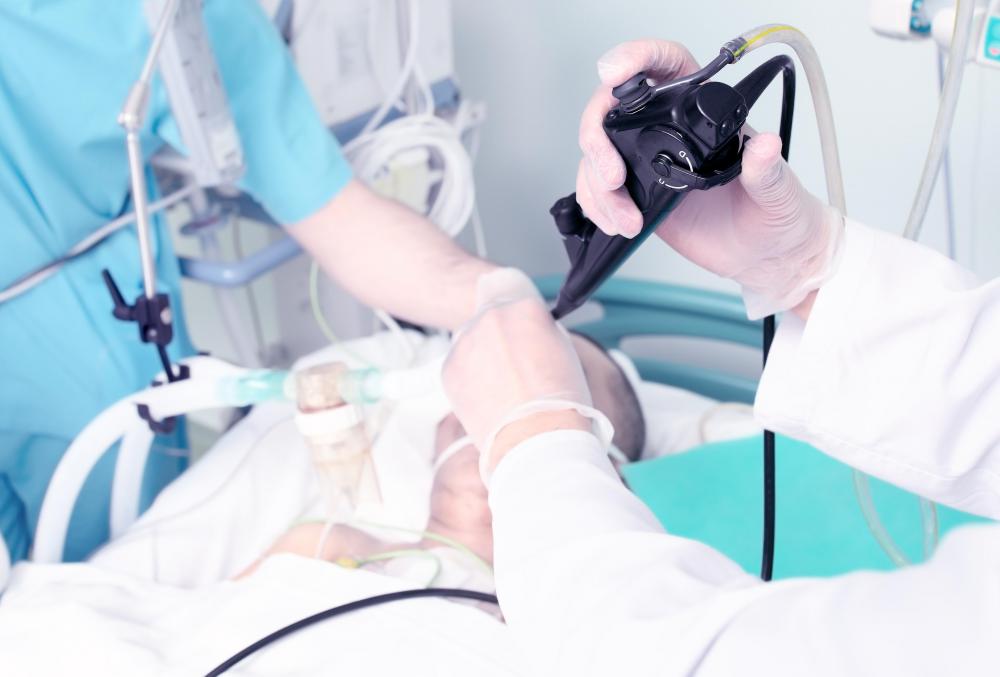At TheHealthBoard, we're committed to delivering accurate, trustworthy information. Our expert-authored content is rigorously fact-checked and sourced from credible authorities. Discover how we uphold the highest standards in providing you with reliable knowledge.
What is a Laryngeal Mask Airway?
A laryngeal mask airway is a type of alternative airway device. It is inserted into the pharynx to provide airway support. It may be used instead of an endotracheal tube in certain circumstances, such as when it is too difficult to get an endotracheal tube into the trachea. They are also sometimes used as an anesthesia application for quick surgeries.
There are various sizes of laryngeal mask airways that can be used depending on the size of the patient. Sizes range from 1, which is for an infant, to size 5, which would be used for a large adult. The airway device consists of three parts: the tube, mask and a cuff, which is inflated after insertion.
In some instances, the laryngeal mask airway should not be used. If a person has extensive facial trauma, the device would not be recommended. It is also not recommended in women who are more than 16 weeks pregnant.

The first step in inserting the airway device is selecting the correct size mask based on the size of the patient. The back of the mask should have a water based lubricant applied to it to make insertion easier. The tube should be placed into the mouth with the tip of the mask pressing on the roof of the mouth and advanced into the pharynx. It can be pushed down with a finger into place. Once the mask is at the pharynx the cuff should be inflated to create a seal.

There are some advantages to using a laryngeal mask airway. It is often easier to insert than an endotracheal tube. It may also cause less gagging since it is not inserted as far. It may work better for patients who have injuries that prevent the head from being positioned correctly for a tracheal intubation.
Although there are some benefits to using a laryngeal mask airway, there are also some risks. The device does not protect against aspiration as an endotracheal tube does. It is not intended for someone who will need long-term ventilation assistance with a life support machine.

There are some minor, common side effects that may occur with the use of a laryngeal mask airway, such as throat soreness, dry mouth, and pain in the ear. More serious side effects or complications can occur, although they are not common. Damage to the laryngeal nerve can occur, which may lead to vocal cord paralysis. Dislocation of the temporomandibular joint can also occur during insertion of the device.
AS FEATURED ON:
AS FEATURED ON:

















Discuss this Article
Post your comments